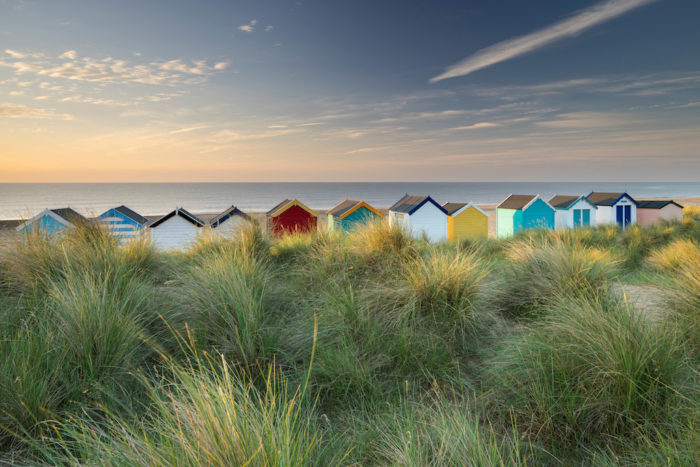Travel guide: Suffolk Coast & Heaths AONB
From rare wildlife and literary inspiration to naval history and ancient gold, The Suffolk Coast & Heaths AONB is full of fascinating and unspoilt attractions, as Florence Sheward discovers
Even after the last Ice Age finally thawed, there was no such thing as the Suffolk Coast. Back then, some 11,000 years ago, Britain didn’t taper gently into the English Channel in a smattering of shingle as it does now; instead it extended into mainland Europe via a stretch of land now known as Doggerland.
While it is tempting to mourn that very tangible connection with the rest of the continent, and tidal surges remain an occasional threat in this low-lying area, we can at least thank those environmental shifts with creating one of the most varied and beautiful landscapes in England.
The Suffolk Coast is at once dramatic and picturesque, desolate yet comforting, an environment with a fragile future and a rich history. Stretching between the coastal resort of Lowestoft in the north and the Essex border to the south, the main 50-mile stretch was designated an official Area of Outstanding Natural Beauty (AONB) exactly 50 years ago as “The Suffolk Coast and Heaths”. The lack of a coastal through-road means that each village and town remain self-contained pockets that are relatively unspoilt by passing tourists.
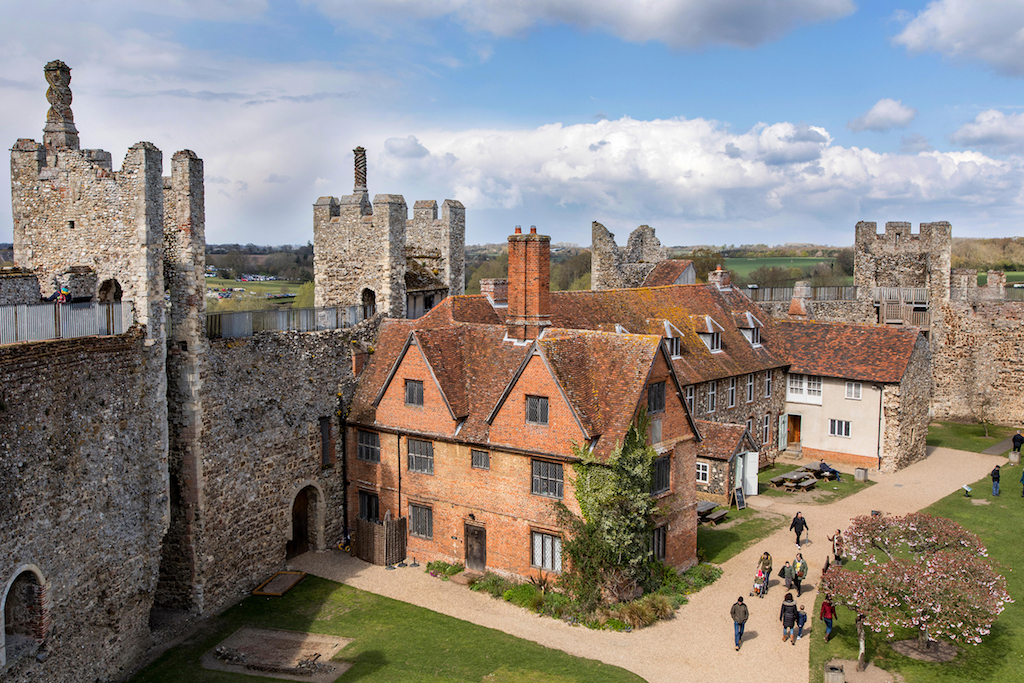
The AONB also encompasses much of the lowlands around the Rivers Orwell and Stour estuaries, an area that has become fondly known as part of “Constable Country”. It was here in the early 18th century that the English Romantic artist John Constable honed his craft, painting bucolic local landscapes in the open air.
In fact, the Suffolk Coast has proven a rather inspirational spot for many of Britain’s greatest artists and writers. Eric Arthur Blair based his famous pen name, George Orwell, on the river near his parents’ home in Southwold, a town that also contained the holiday home of best-selling crime writer PD James – she used it as the setting for her dystopian novel, The Children of Men, which was turned into a film in 2006. In fact, while the area can claim links to William Shakespeare and Charles Dickens too, it is perhaps more telling that many of the literary claims to fame are as a result of imaginations being captured here. Dodie Smith chose Sudbury as the setting for 101 Dalmatians, while Noddy and Famous Five author Enid Blyton stayed with friends in Woodbridge, the local – and apparently spooky – Seckford Hall proving a particular inspiration (it is now a four-star hotel and spa). In a lovely instance of life imitating art, meanwhile, the “Meare” boating lake at Thorpeness was built by wealthy barrister Glencairn Stuart Ogilvie after taking inspiration from the books of his close friend, Peter Pan creator JM Barrie. The lake is open to visitors each summer and, in true Neverland style, the waters are only ever three-feet deep, meaning one truly need never grow up.
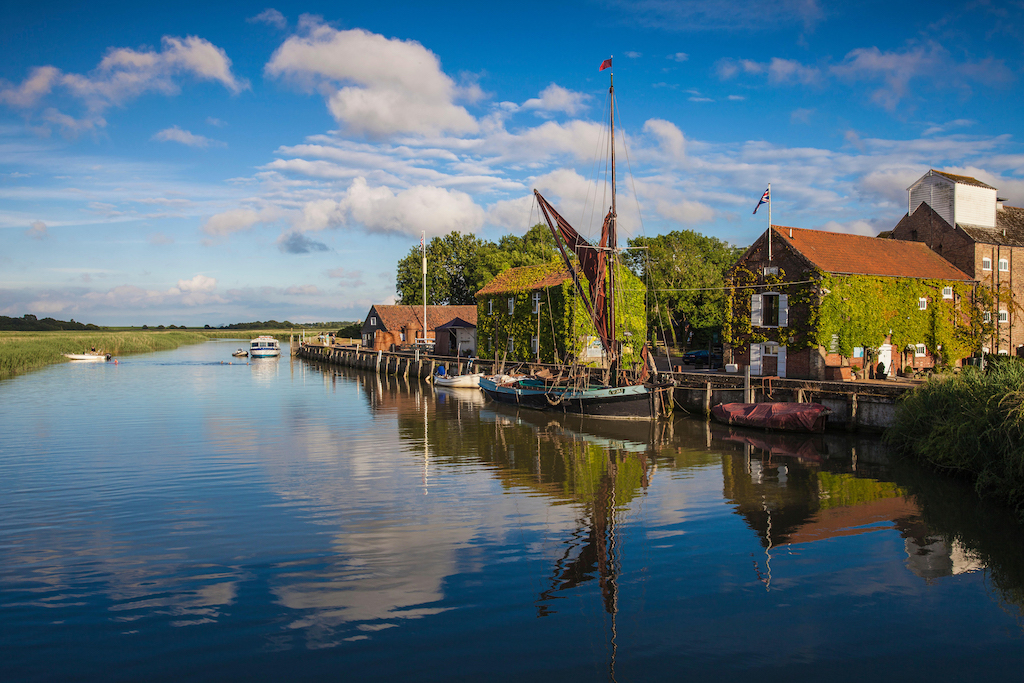
Another key influence on the area was pianist and composer Benjamin Britten. Born in Lowestoft in 1913, he rose to international fame with the 1945 opera Peter Grimes which was set in a fictional village similar to Aldeburgh. Three years later he established the Aldeburgh Festival which continues to this day (the next is scheduled for 11-27 June 2021) and attracts an international programme of performances to the Snape Maltings Concert Hall, a converted malthouse that was the brainchild of Britten and opened by HM The Queen in 1967. The Red House, the Aldeburgh home Britten shared with his partner Peter Pears, is something of a pilgrimage for classical music fans, with archival displays and original 1950s décor.
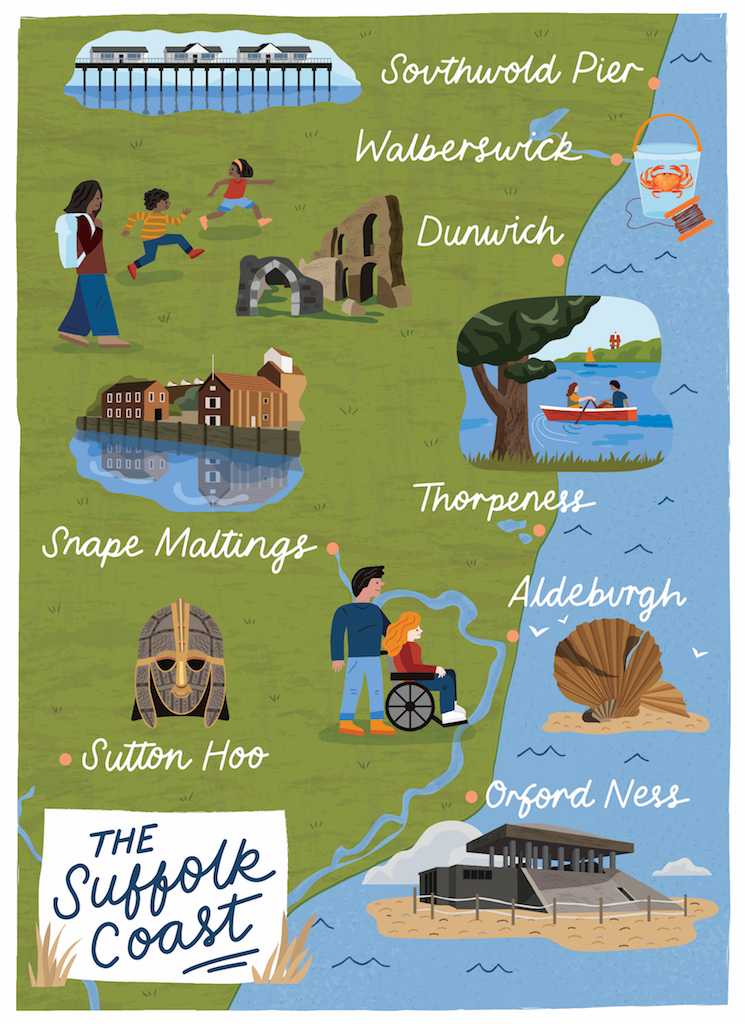
It’s not just cultural history on offer along the Suffolk Coast either. The nearby Framlingham Castle was the pre-coronation refuge for Mary, Queen of Scots, while the coastline’s proximity to mainland Europe made it a focus for Henry VIII to develop fortifications in the 16th century while fearing a Spanish invasion. Naval history is well served by displays inside Felixstowe Museum and Landguard Fort.
Really, the joys of the Suffolk Coast are to be had outdoors however, whether that’s surrounded by samphire and seals along the River Deben, kicking up stones on Shingle Street, or indulging in a spot of crabbing at Walberswick. That village, a favourite of Scottish designer Charles Rennie Mackintosh, is also the annual home of the World Open Crabbing Championships, a rare busy moment in the calendar of one of England’s most quiet and relaxing areas.
5 places to visit on Suffolk Coast
1 Southwold Pier
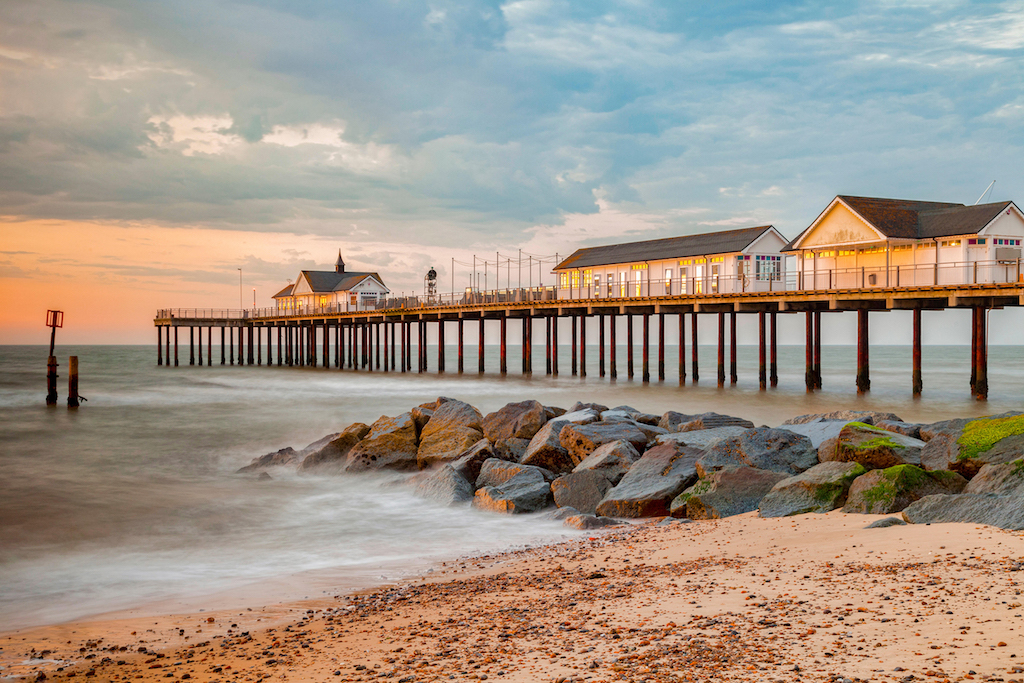
If you’re yearning for a little vintage English seaside fun, look no further than Southwold Pier. Originally built in 1900 as a gantry for passengers alighting from steamships en route from London, it was rebuilt in 2001 following storm damage. At 623 feet in length, there is plenty of room for recapturing a little Victorian spirit here.
For some old-timey entertainment, visit Tim Hunkin’s Under the Pier Show, an eccentric collection of homemade games and gadgets, or stroll back into town to the Electric Picture Palace, which screens films with a Wurlitzer organ interval. Scale the 19th-century lighthouse for endless views over the coast and then relax afterwards with a drink at the Sole Bay Inn or the Lord Nelson, a seafront pub decked out like a naval museum. Both serve delicious ales from the local Adnams brewery.
Sutton Hoo
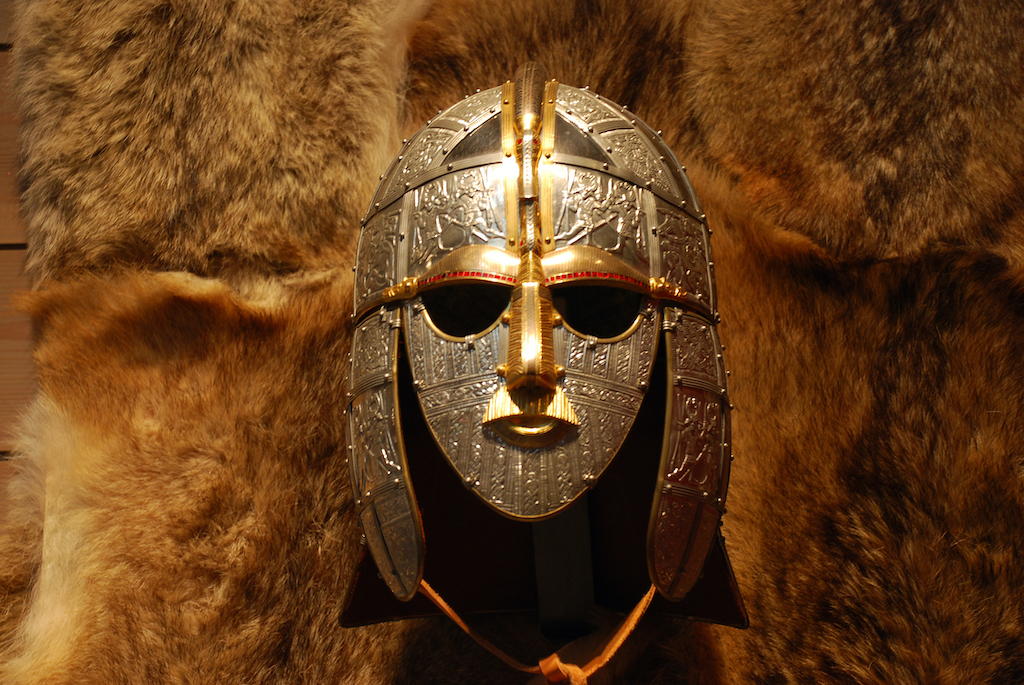
During the Second World War, posters were imploring gardeners to “Dig for Victory”. Little did they know a major victory was being unearthed in a quiet corner of the Suffolk coast at the time too.
In the summer of 1939, archaeologists working on the outskirts of Woodbridge would excavate parts of a ship buried deep in the sandy soil. Within that structure was an Anglo-Saxon royal burial chamber containing untold riches: ornate weapons, musical instruments, drinking horns, gold coins, silver spoons and a helmet, all thought to belong to King Raedwald of East Anglia and date from around 625 AD.
Replicas of these treasures can be viewed in the exhibition hall, which is part of the wider, National Trust-maintained 255-acre estate. Guided trails offer plentiful opportunities to explore the local landscape.
www.nationaltrust.org.uk/sutton-hoo
Aldeburgh
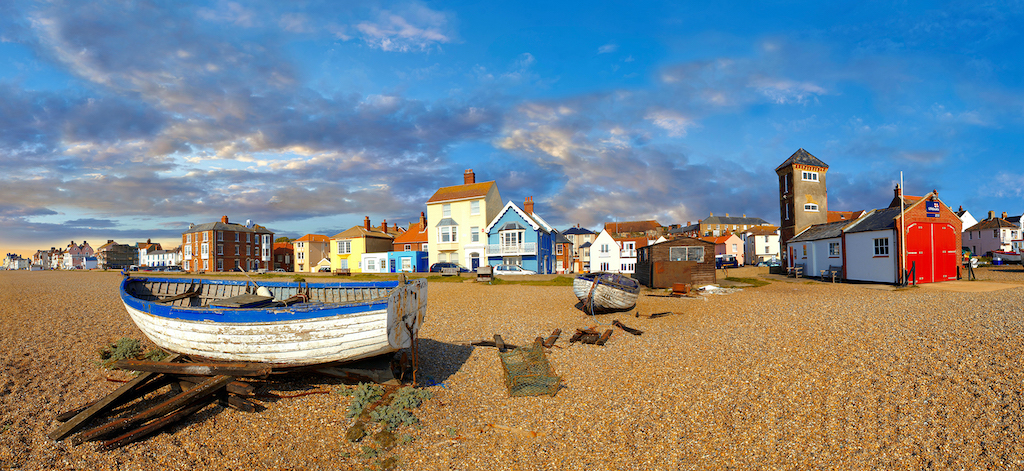
Benjamin Britten put his hometown on the cultural map, yet as far back as Tudor times Aldeburgh was a busy port and centre for shipbuilding. Those parts have since fallen into the sea, though what remains is one of England’s quaintest coastal outposts. The Moot Hall is one of few buildings to survive from the 16th century and suitably contains the Aldeburgh Museum, dedicated to local history and life at sea. The Aldeburgh Beach Lookout hosts regular artist residencies and accompanying exhibitions by the sea, while The Brudenell Hotel is the pick of places to stay for non-artists.
Follow in Britten’s footsteps with an afternoon walk north along the coast to Thorpeness and you will pass artist Maggi Hambling’s 2003 sculptural tribute to the composer, Scallop, a 15-foot shell sat on the shingles.
Dunwich
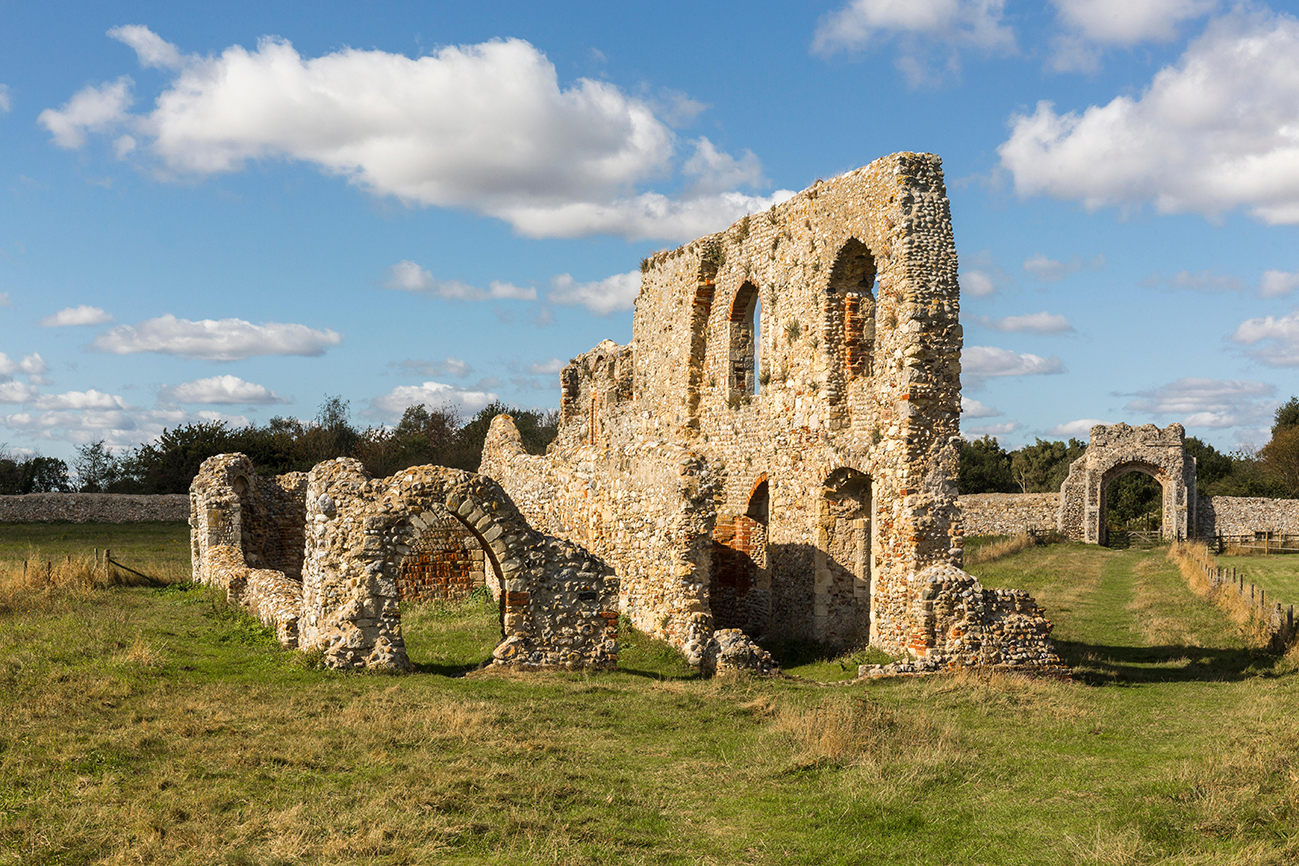
Dunwich is England’s lost city, a seat of power for Anglo-Saxon kings and briefly matching London for size during its 13th-century heyday. Visit today and one could find little to initially suggest this is true, as Dunwich appears to be nothing more than a triangle of winding roads.
Dig a little deeper and it emerges much of the former city was lost during a succession of storm surges. Dunwich Museum tells the story of what might have been and also points towards the only surviving buildings from that time which can be explored at leisure: the chapel of an old leper hospital in the churchyard and the remains of a 13th-century Franciscan priory known as Greyfriars. Visit during late summer to catch the National Trust-maintained heath alive with colour too.
Orford Ness National Nature Reserve

Nowhere is the encroaching sea more evident along this stretch of coastline than Orford Ness. A lighthouse had stood here for 300 years, yet the most modern iteration was decommissioned in 2013 and demolished this summer. It is a reminder of the fragility of this 10-mile shingle spit, which lies between the River Ore and the North Sea. The National Trust strictly controls the exposed area, accessible via a ferry and home to rare birds, Chinese water deer, saltmarsh plants and more.
Remarkably the area has a parallel history as a place of military interest, from the 12th-century Orford Castle to the world’s first radar system being developed here in the 1930s (pictured above). One of England’s 103 Martello towers, built to ward off Napoleon’s forces, is now an unlikely holiday let via The Landmark Trust.
www.nationaltrust.org.uk/orford-ness-national-nature-reserve

